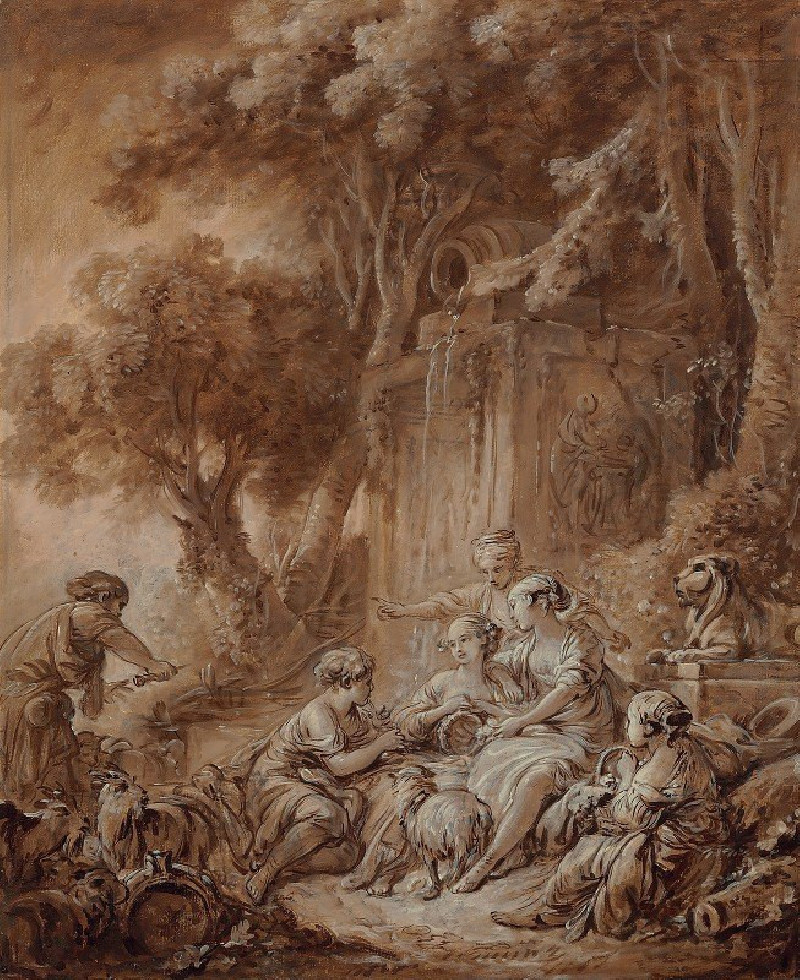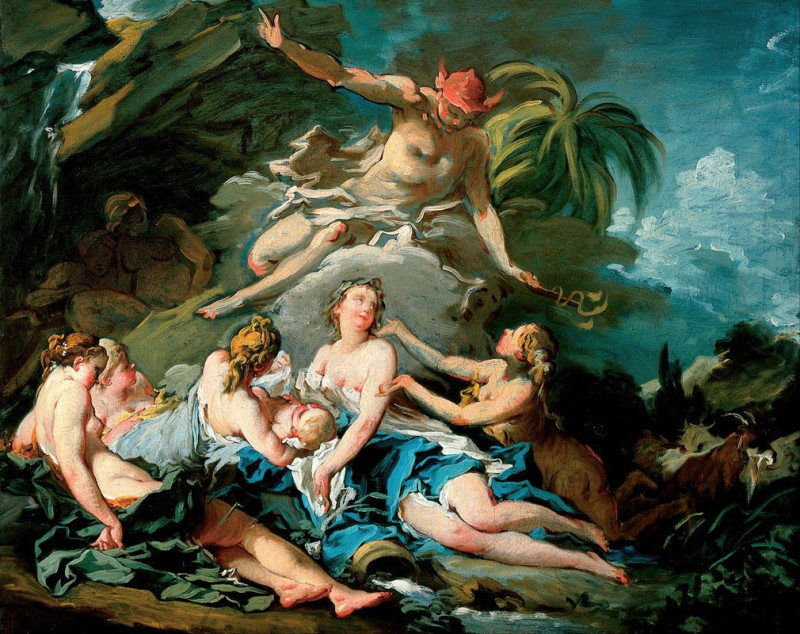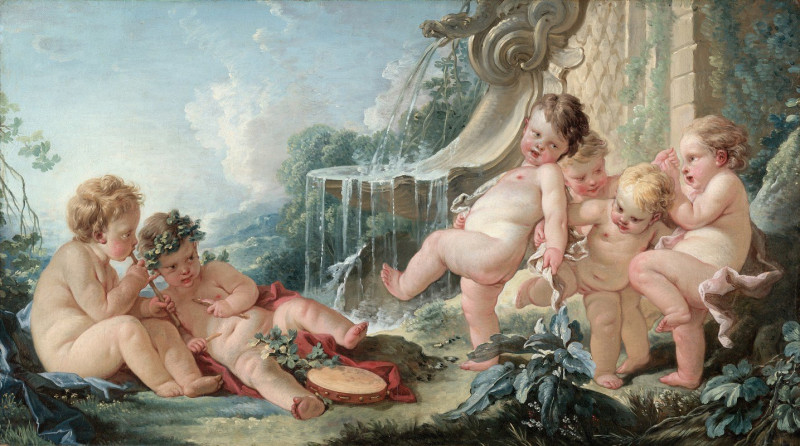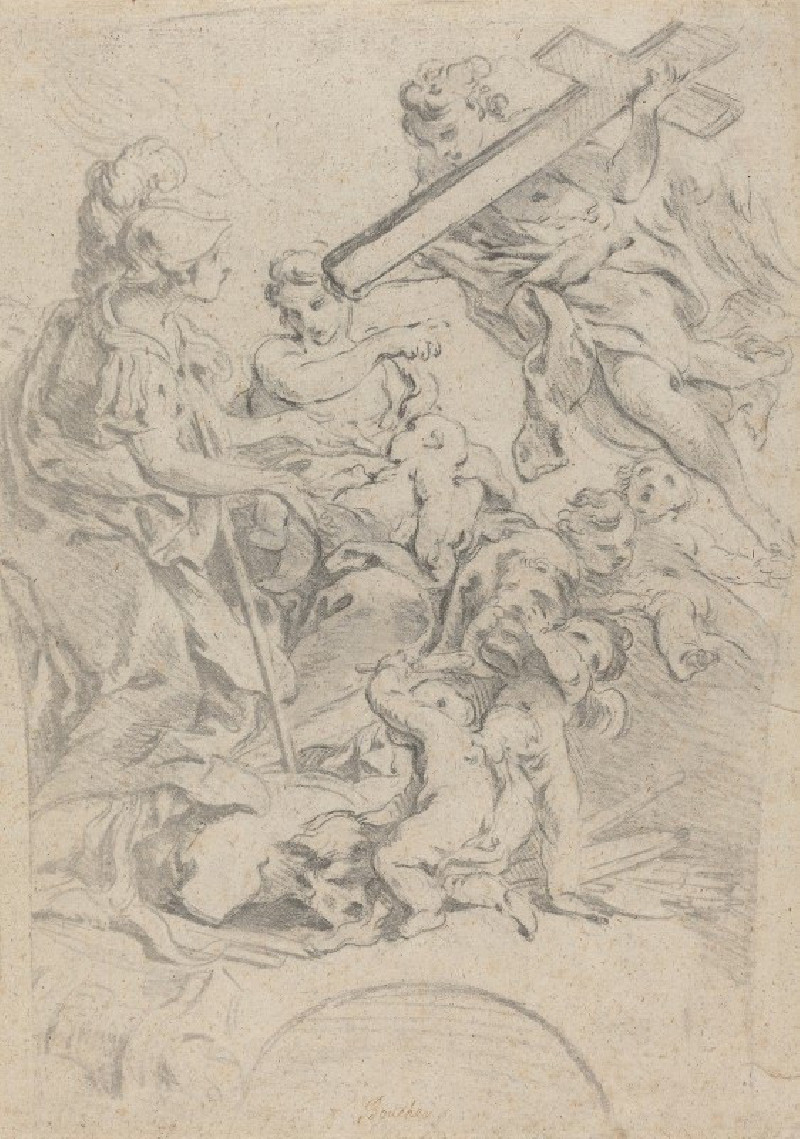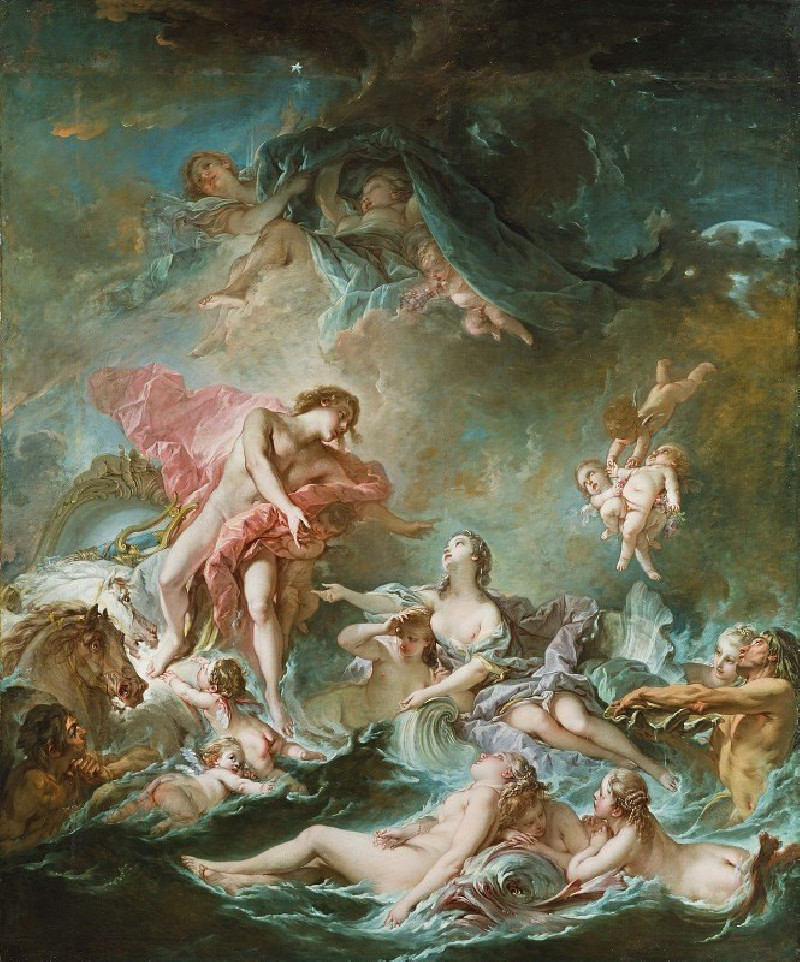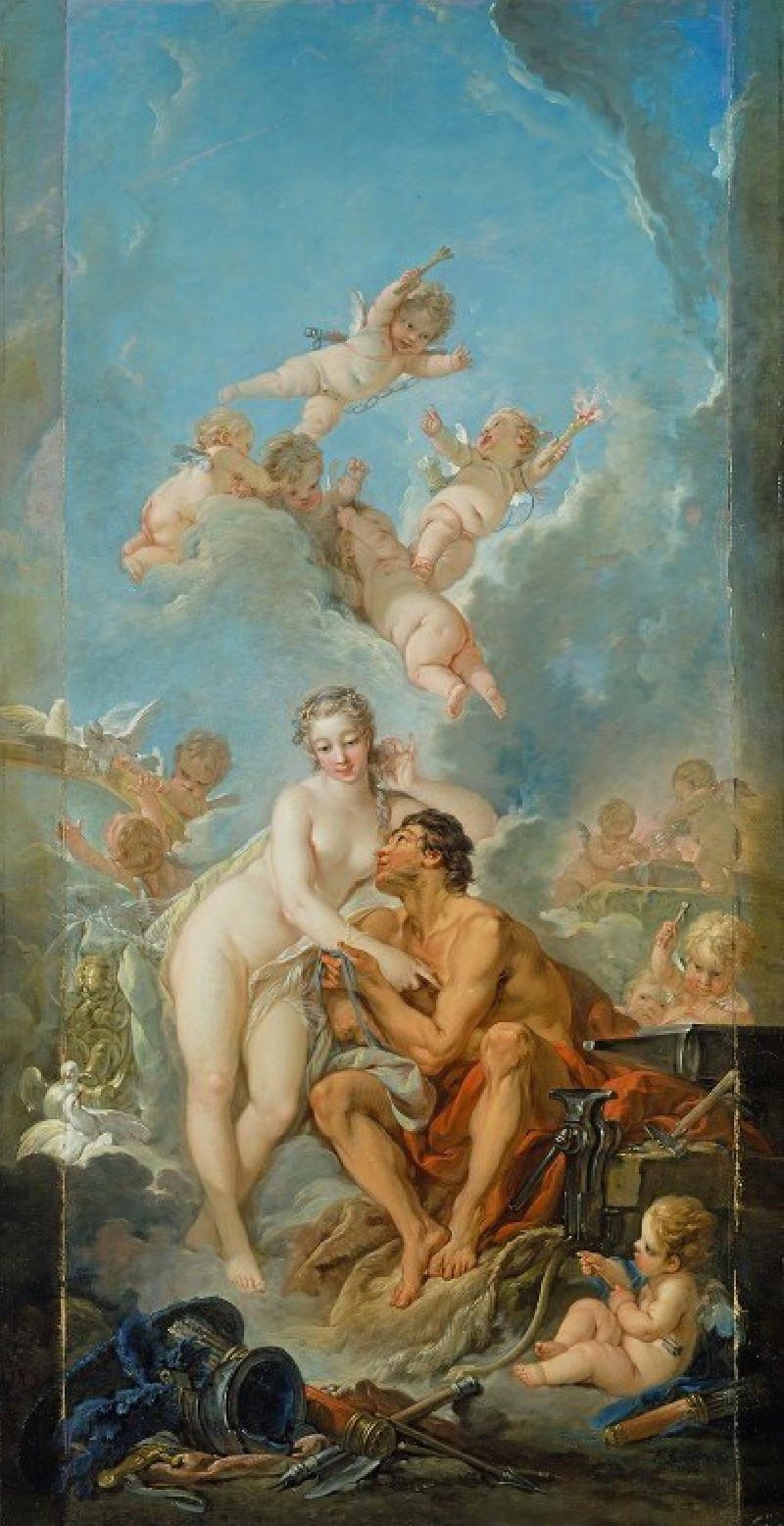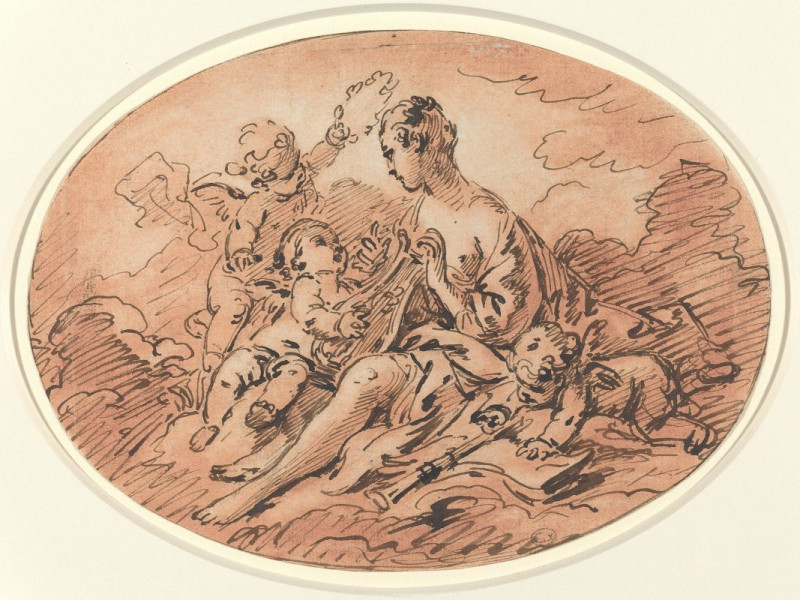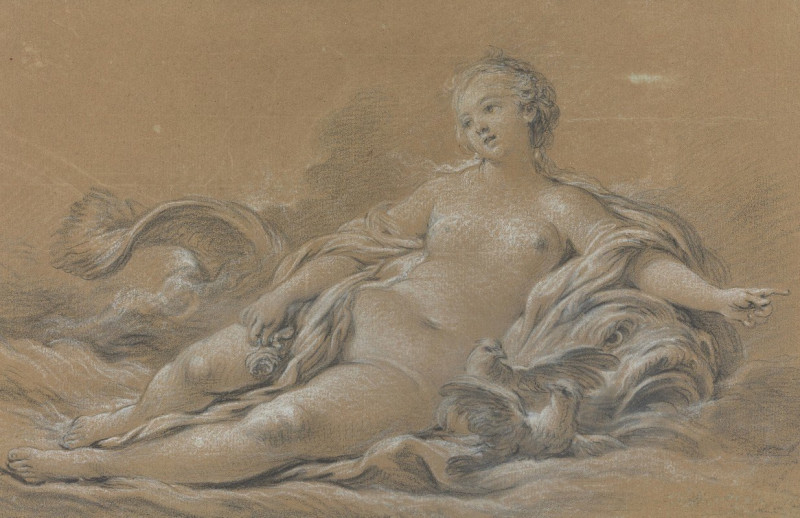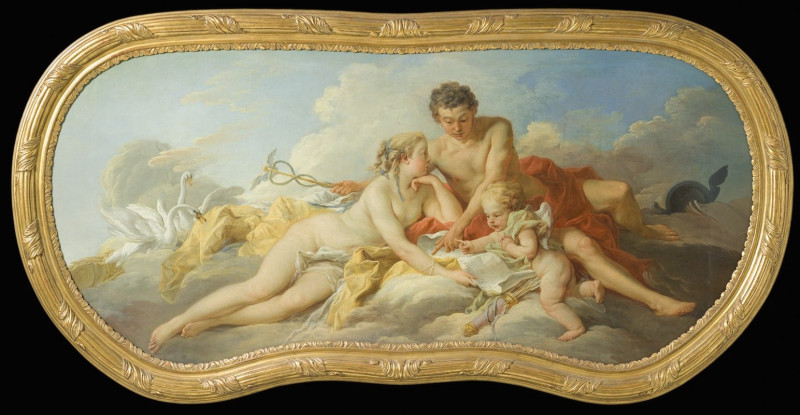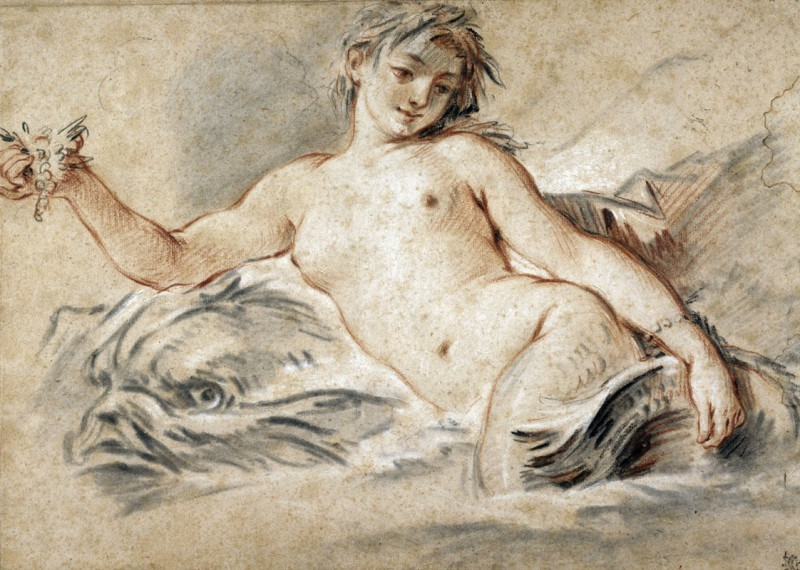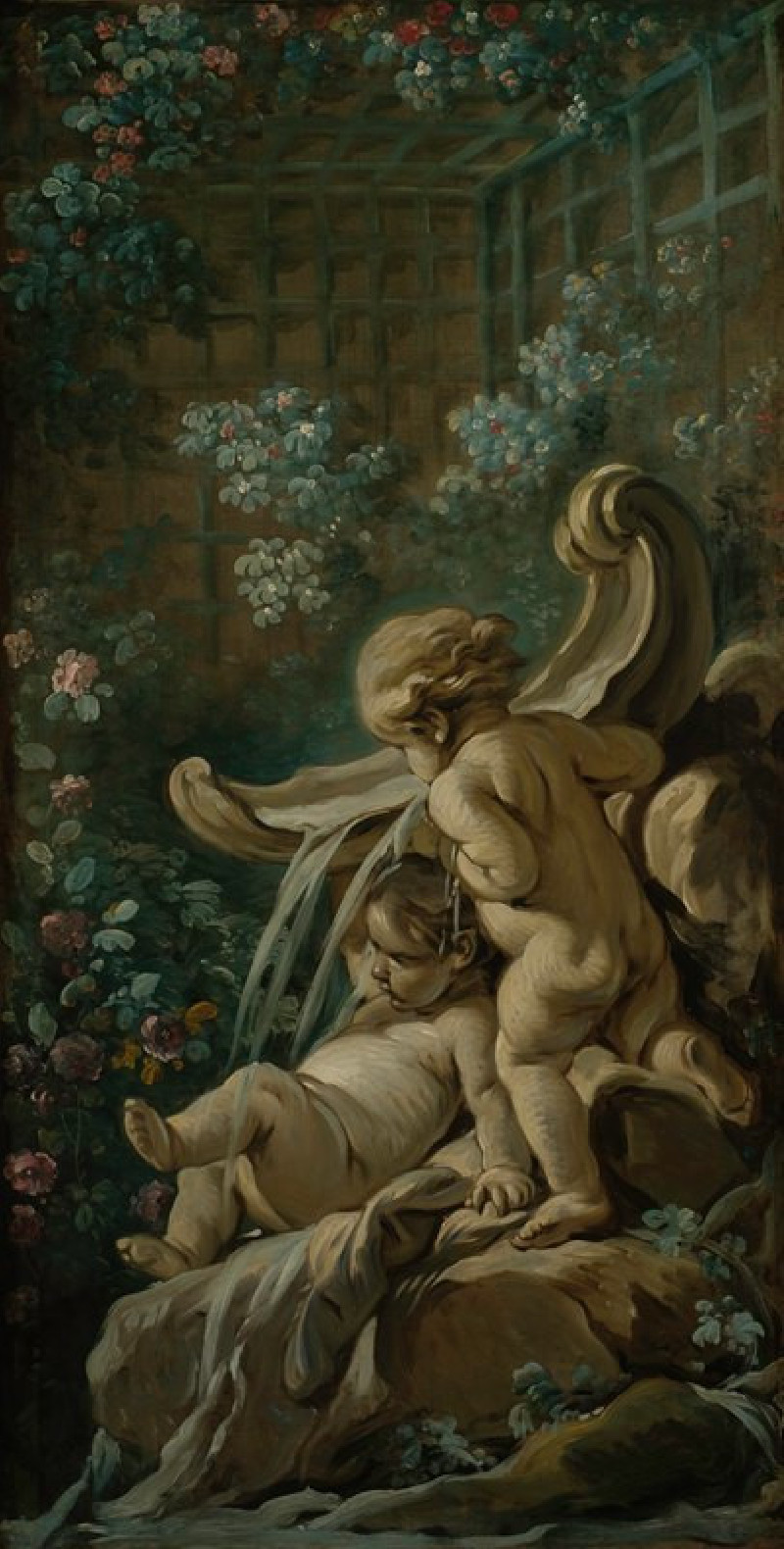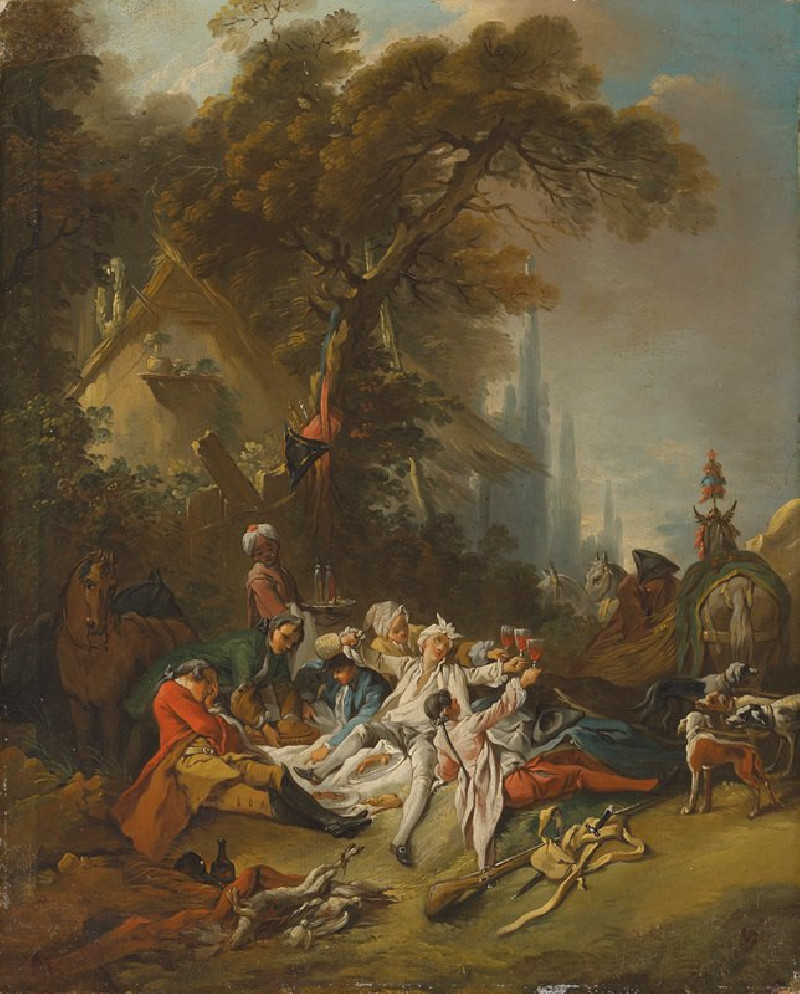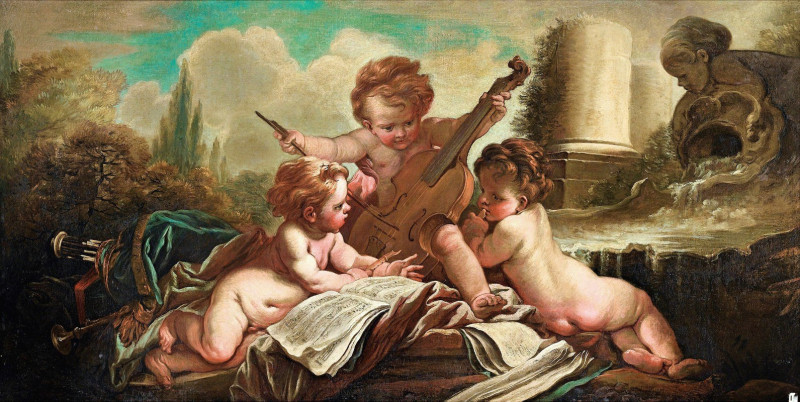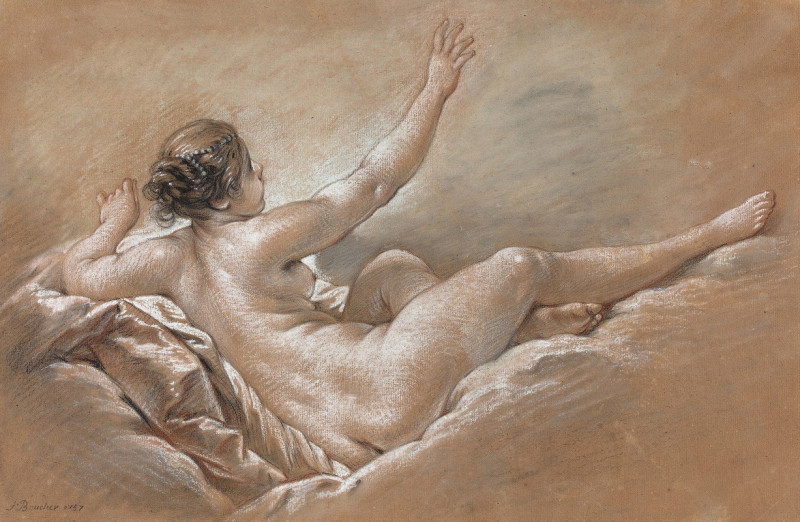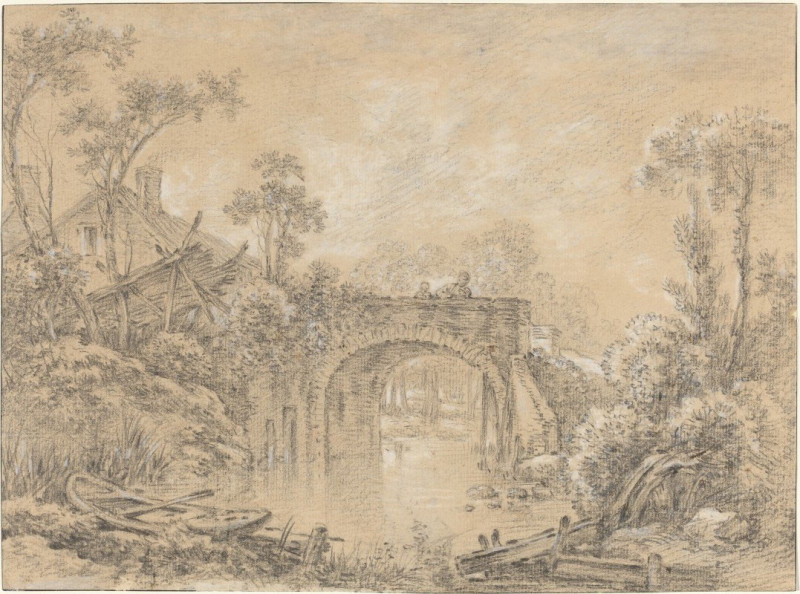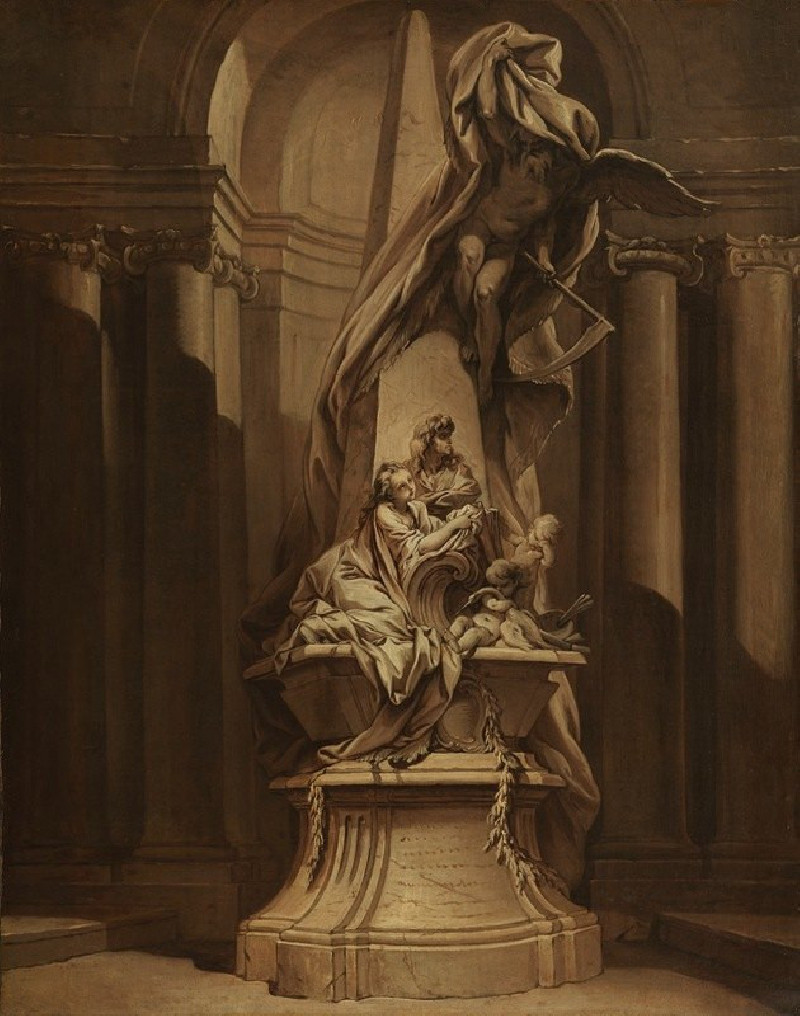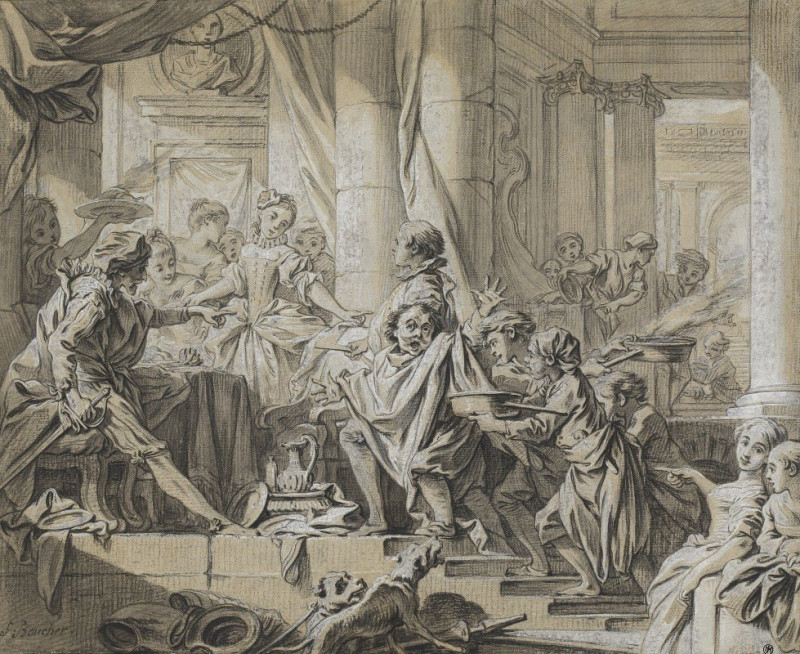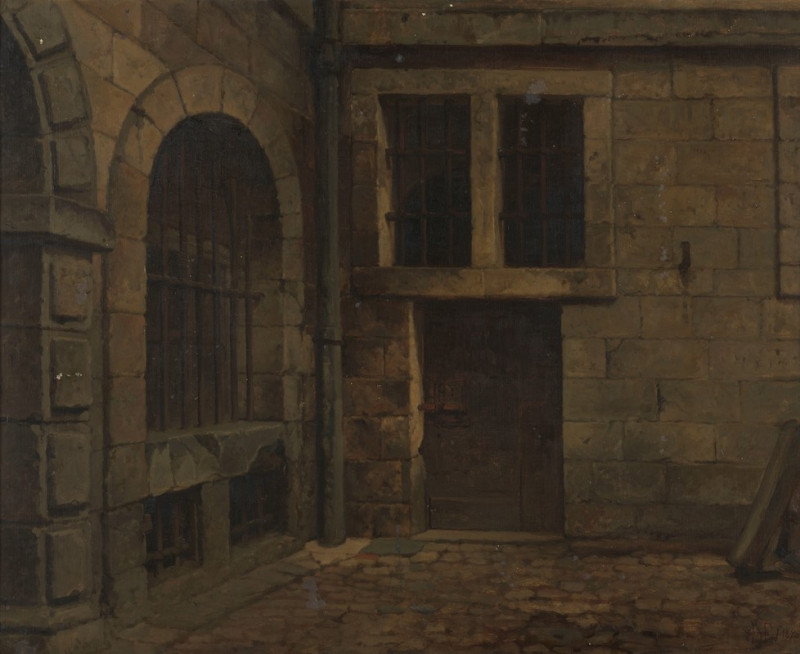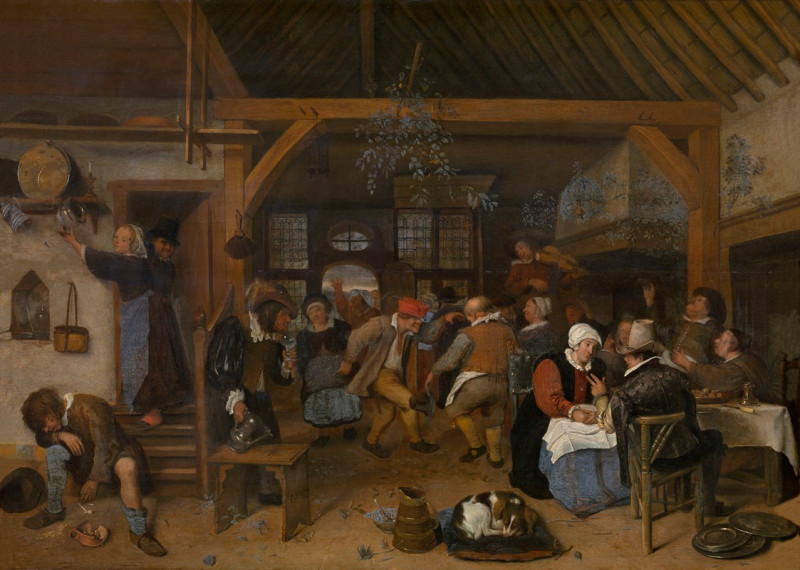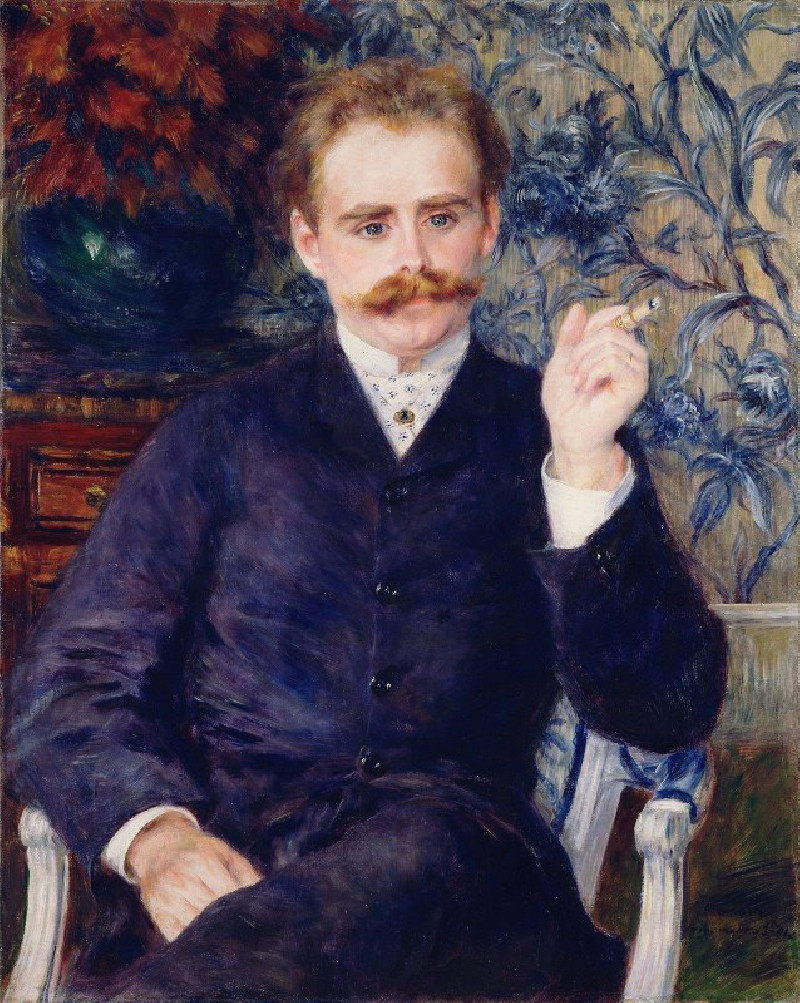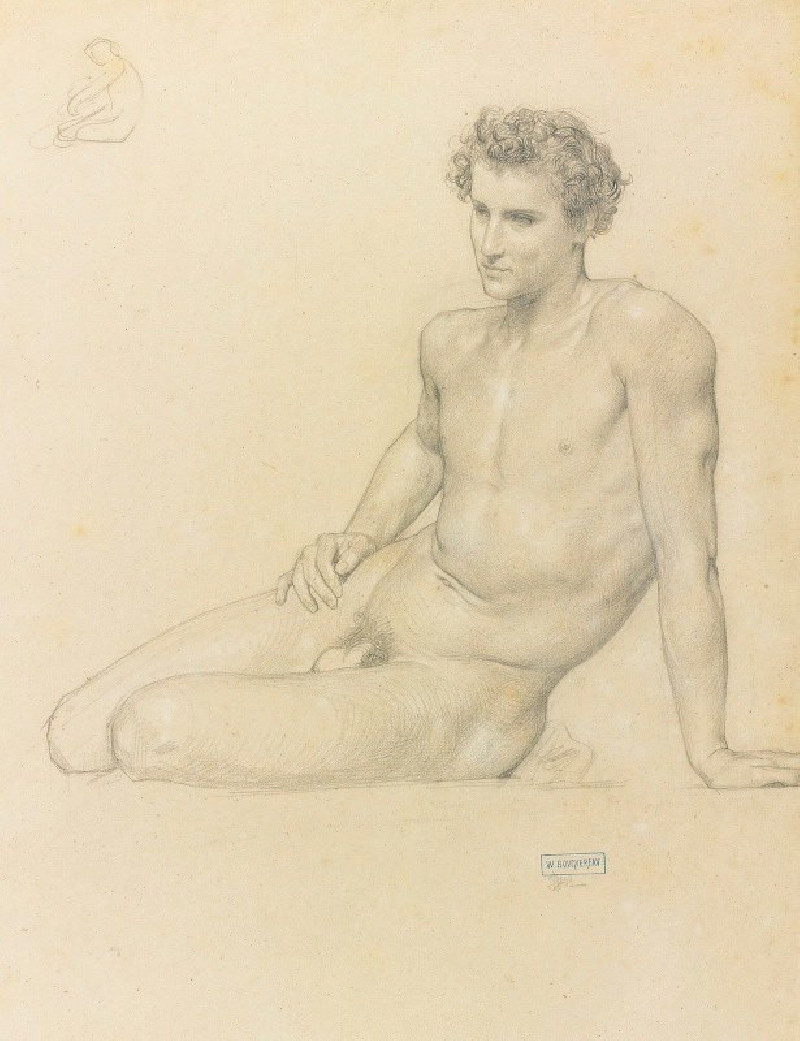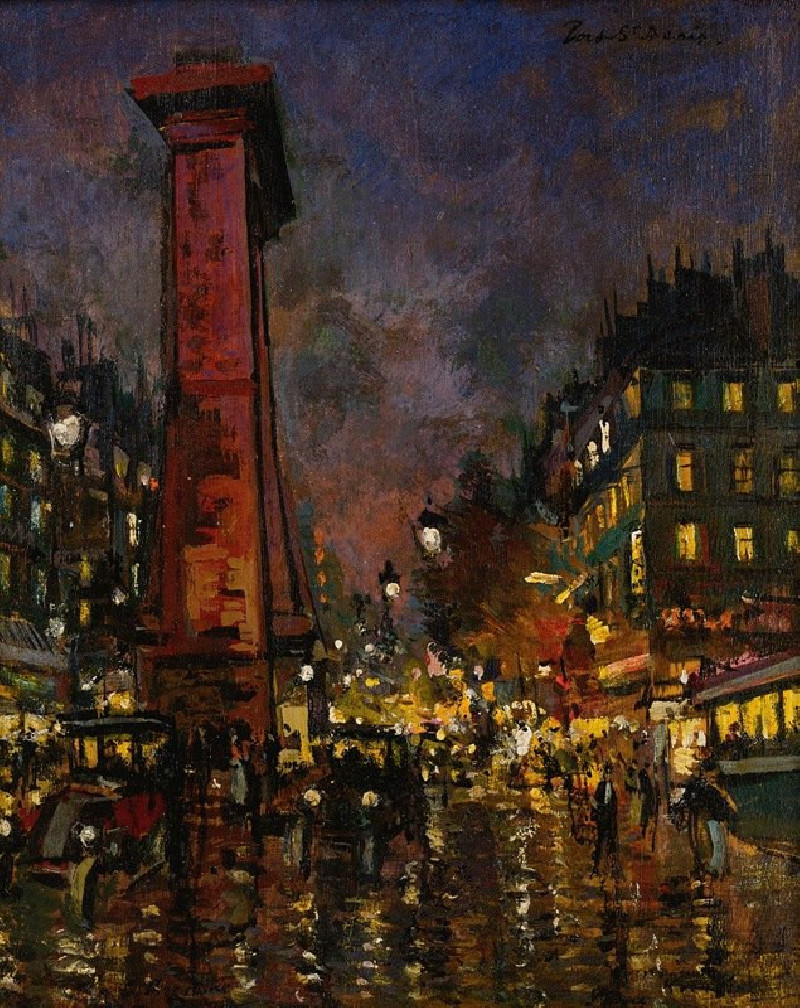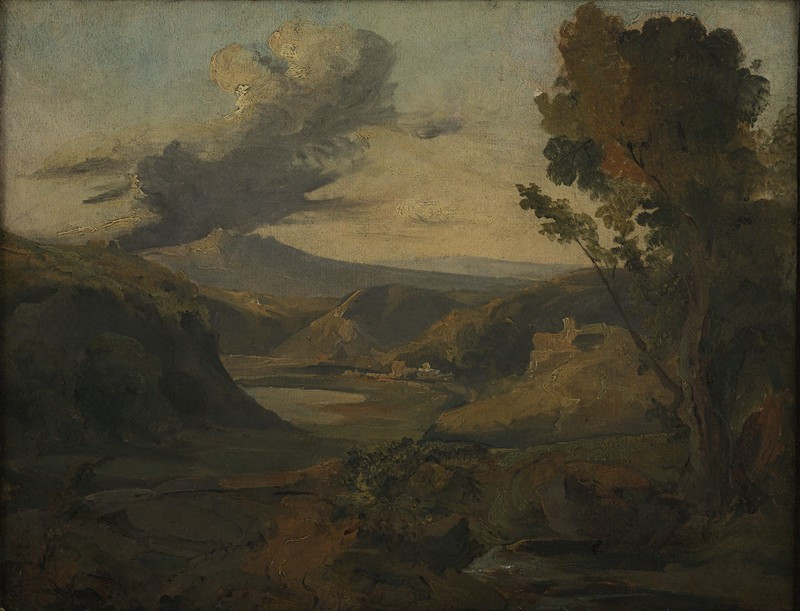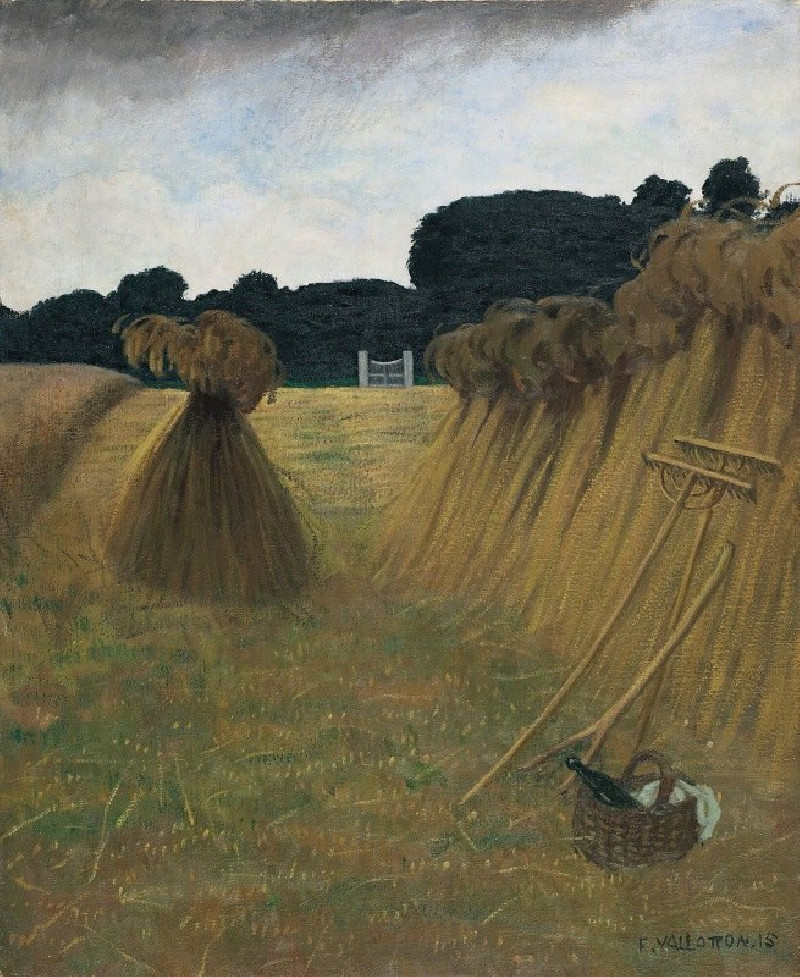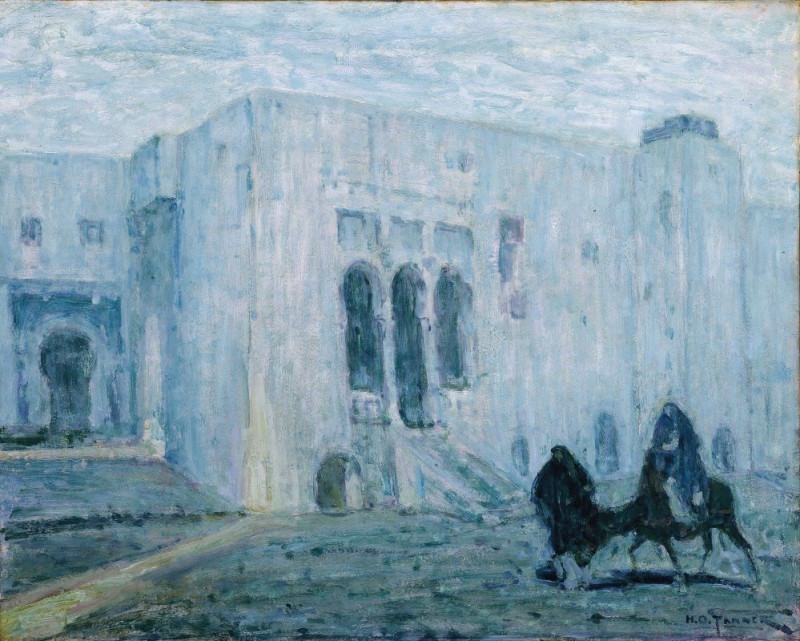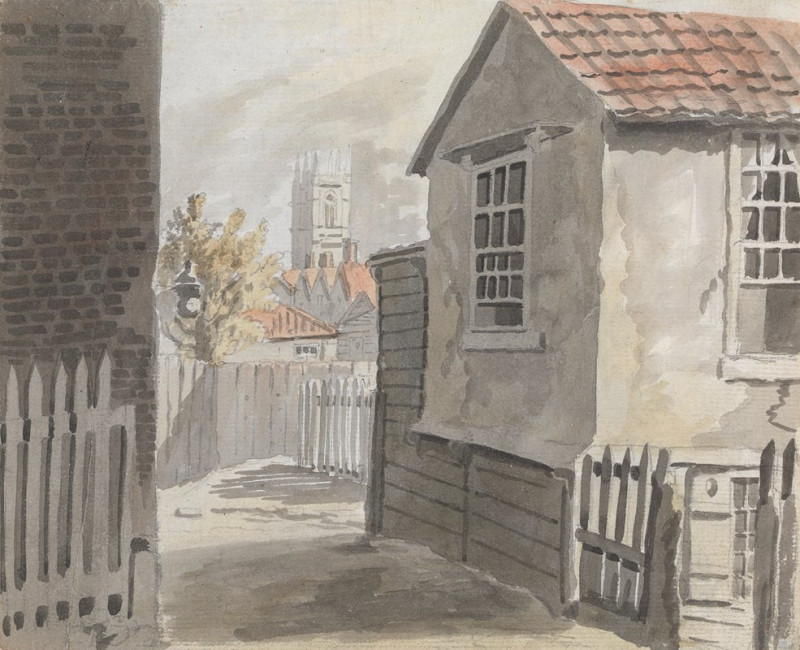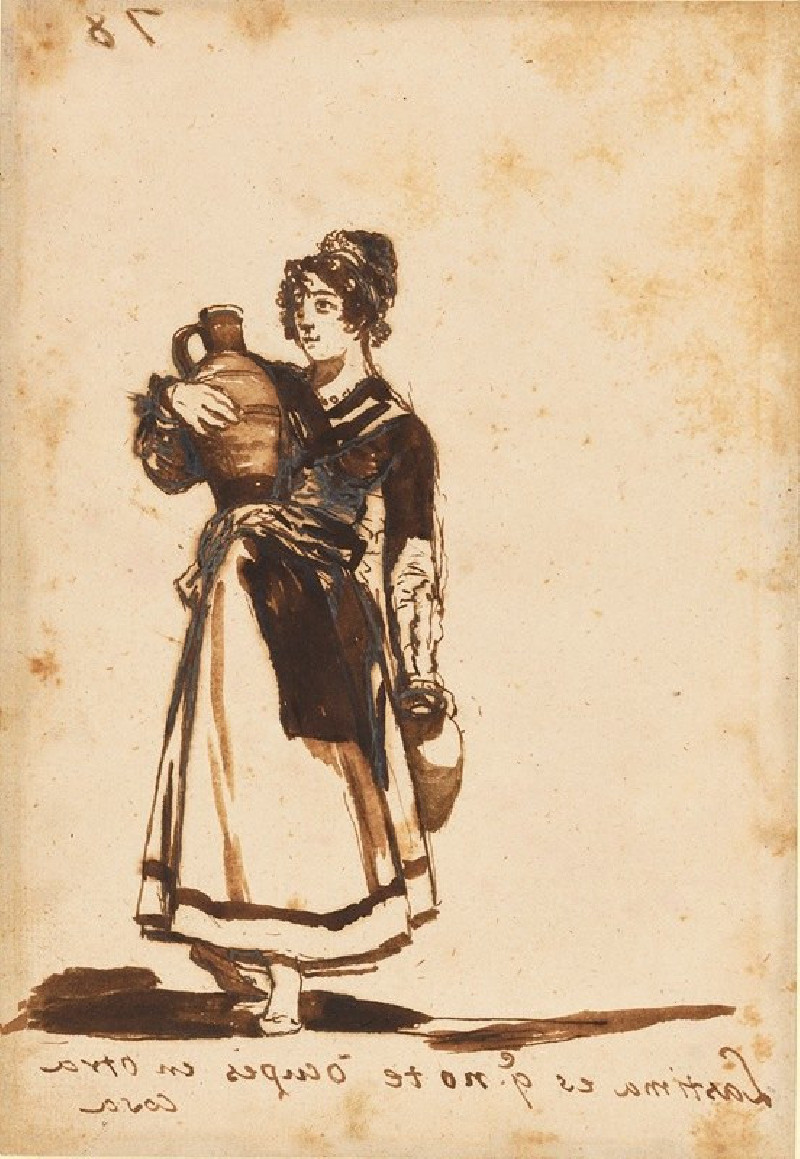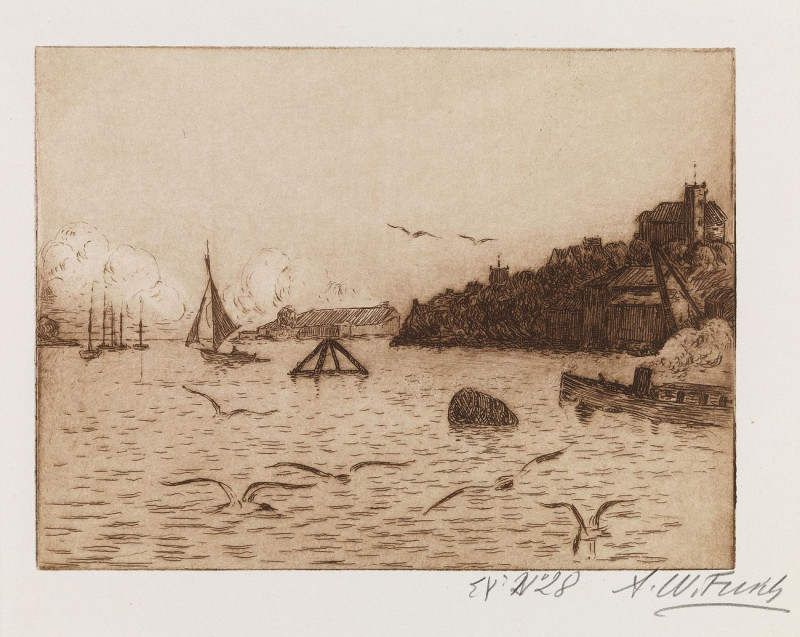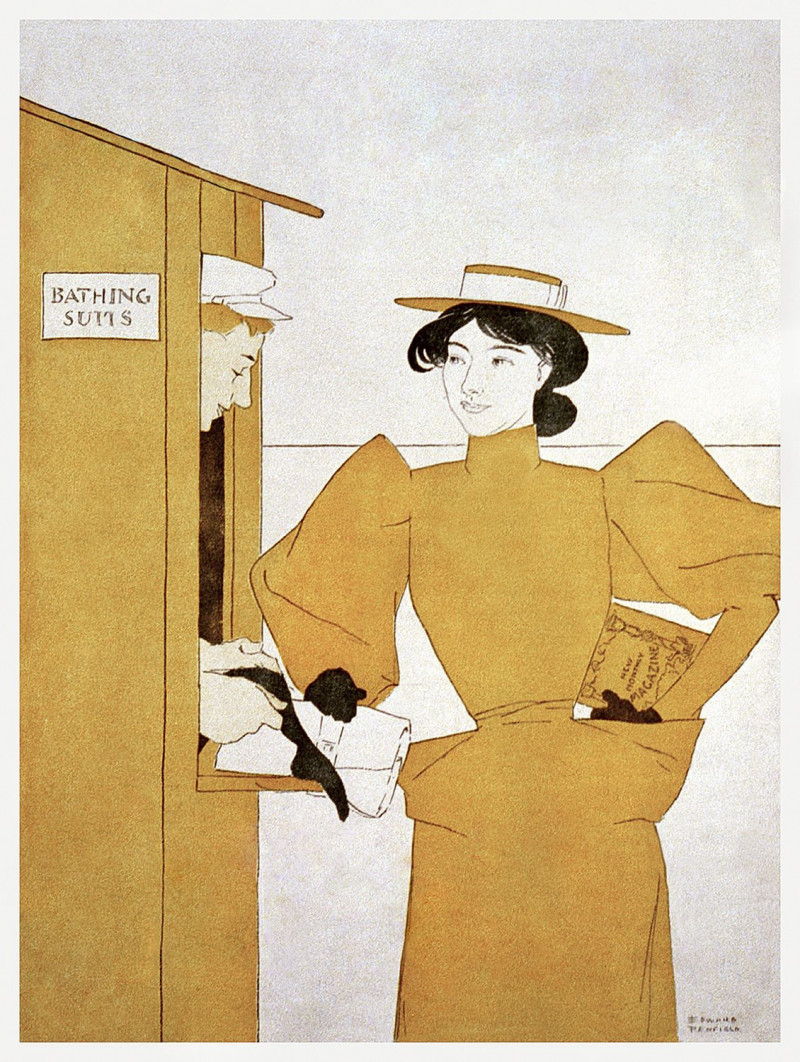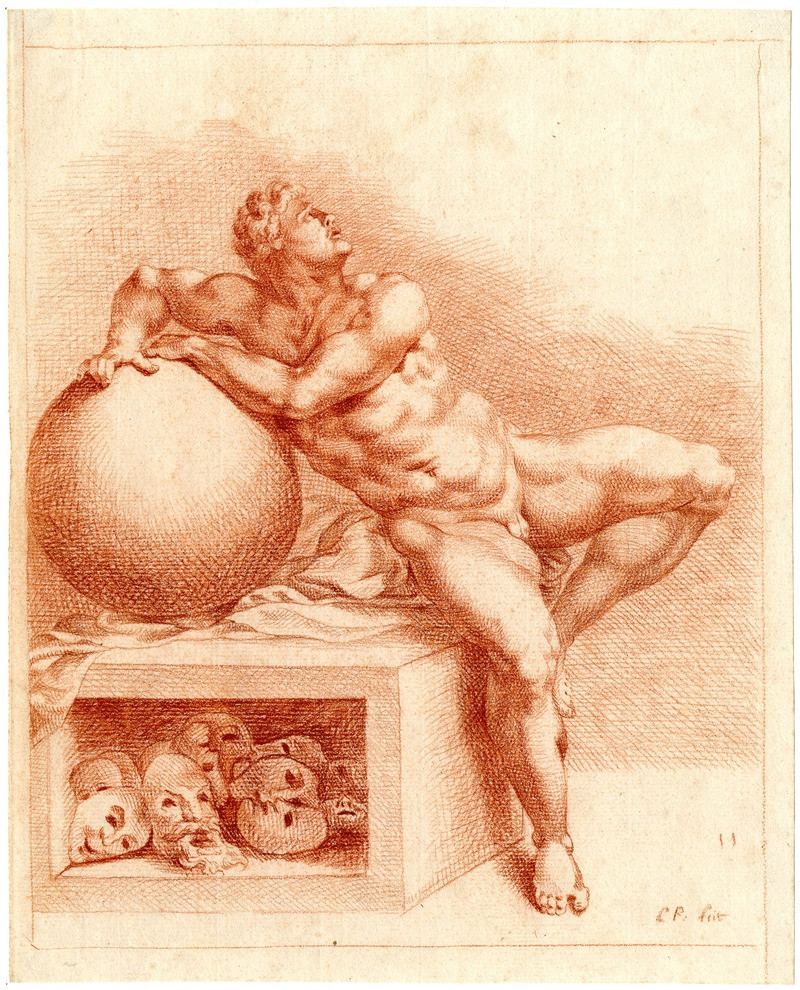Diana Returning from the Hunt (1745)
Technique: Giclée quality print
Recommended by our customers
More about this artwork
Artist: François BoucherDate: 1745François Boucher's painting, , captures the mythological essence of Diana, the Roman goddess of the hunt, accompanied by her nymphs. In this exquisite 18th-century masterpiece, the figures are set against a serene, wooded backdrop, which is typical of Boucher’s lush and romantic landscapes.The central figure, presumably Diana, is depicted with an ethereal grace, her skin glowing against the soft texture of her drapery and the wild nature around her. She sits elegantly beside a stream, seeming to unwind after the hunt. Her divine status is subtly indicated by her relaxed yet majestic posture and the presence of a crescent moon diadem in her hair, symbolizing her connection to lunar phases and her celestial nature.To her left, a nymph gently restrains a hound, possibly representing Diana's control over natural elements, including the animal kingdom. This interaction not only emphasizes Diana’s role as the huntress and protector of creatures but also conveys a sense of peaceful coexistence within the natural world.Another nymph, on Diana’s right, engages affectionately with a cherub, adding a touch of innocence and charm to the scene. This interaction among the figures suggests a narrative of companionship and celebration after a successful endeavor, typical of Boucher’s work which often focused on themes of mythology and idyllic pastoral life.The foreground is adorned with symbols of the hunt—arrows spill from a quiver and game birds lie nearby, underscoring the painting’s title.
Delivery
Returns
François Boucher (1703–1770) was a French painter, engraver, illustrator and printmaker. He was a proponent of Rococo and had a huge influence in spreading the style throughout Europe. His art was idyllic and voluptuous with a high-toned palette of blues and pinks. He created designs for all decorative arts, porcelains and tapestries. Boucher also painted several portraits including his patroness Madame de Pompadour. He is one of the most celebrated decorative artists of the 18th century.




